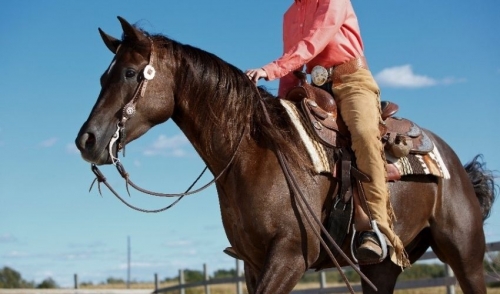
Conditioning Your Horse: 5 Types of Fitness
Spring is officially here and you’ve probably got a season full of shows, races, trail rides, and more planned for you and your horse. But before you put your horse back to work, take a minute to think about the importance of conditioning. Conditioning is a huge part of your horse’s health and well being. Taking time to prepare for an event by gradually increasing speed and distance over several weeks is essential to keeping your horse healthy and safe.
Conditioning directly relates to five types of fitness in the horse:
- Cardiovascular fitness refers to how well the blood can circulate through the muscles. As the horse gains more cardiovascular fitness, his heart does not have to beat as hard to transport oxygen.
- Normal Resting Heart Rate:
- 36 BPM or less (the more fit the horse, the lower the Resting Heart Rate)
- Moderate Work: 75-105 BPM
- Heavy Work: 200 BPM or higher
- The heart rate of a working horse should recover to 60 BPM or lower after 10-15 minutes of rest; if the horse is in poor condition it may take 30-45 minutes for recovery
- Normal Resting Heart Rate:
- Respiratory fitness is how oxygen is introduced into the blood. The more fit the horse, the less acidic the blood will be (from CO2 and lactic acid), making respiration easier since the horse doesn’t have to breathe as hard to get rid of excess CO2 and take in more oxygen.
- Thermoregulation is simply the horses need to cool itself, which happens through breathing heavily and sweating. Fat horses and horses that are extremely muscular are not able to cool themselves as well as leaner, less muscled animals. Too much heat production can lead to serious problems, such as lethargy and becoming uncoordinated.
- Muscular fatigue is also a serious indication of poor condition. Muscles that are worked hard create lactic acid and metabolic wastes. If too much lactic acid builds up in a certain area, soreness will result. Conditioning will help your horses’ muscles burn fuel more efficiently and with less waste; another important way to reduce muscle soreness is to be sure to allow adequate cool down time (at least 30 minutes walking after a hard workout).
- Skeletal fatigue can occur in your horse’s bones, joints, tendons and ligaments. Horses with skeletal fatigue are more likely to suffer sprains and strains. As you ride, your horse’s bones are constantly compensating for your weight as well as the type of work being done. For this reason improper preparation in a certain event may lead to skeletal fatigue. For example, a western pleasure horse taken on an endurance ride without the right preparation may lead to problems with the bones, ligaments, joints and /or tendons.
A conditioning program should be based on what you want to achieve with your horse. A dressage horse will have a different conditioning program than a barrel racing horse, so keep your long term goal in mind. The most common method of conditioning includes alternating between slow speed and fast speed conditioning, continually increasing the amount of work done as the horse becomes more fit until optimum condition is reached.
The feed room is proudly brought to you by Nutrena and Cargill Animal Nutrition. Learn more about us here. You can see the original blog post here.
